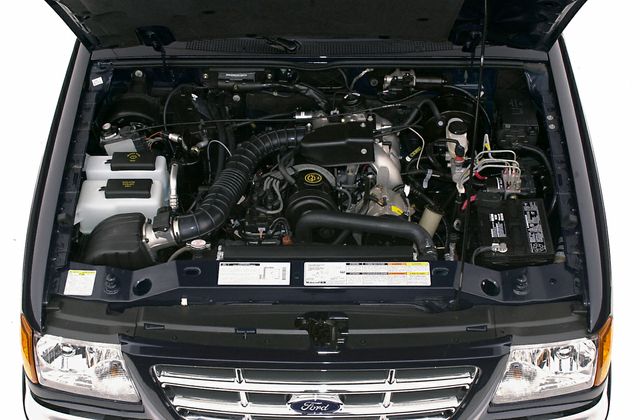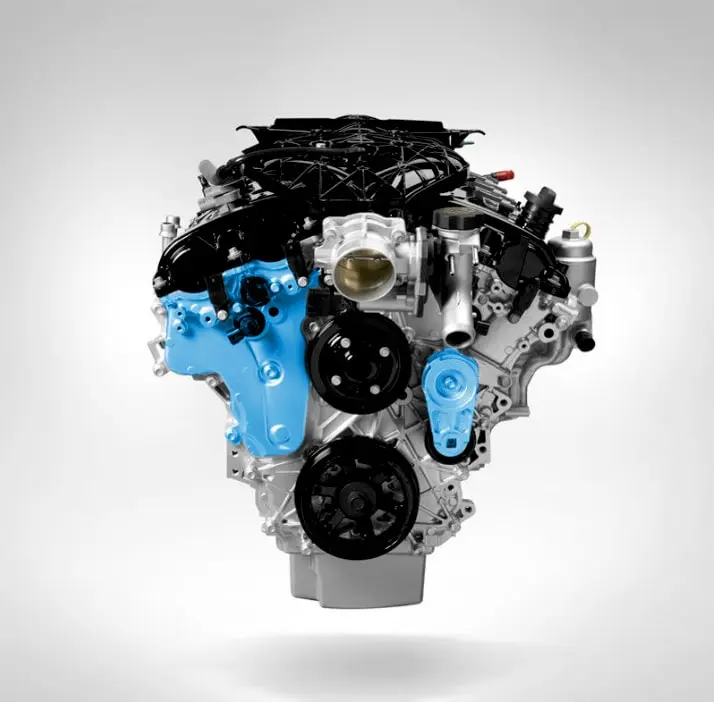Everything You Need to Know About the 2.2 Ford Ranger Engine and Its Performance
Everything You Need to Know About the 2.2 Ford Ranger Engine and Its Performance
Blog Article
Recognizing the Fundamentals of Vehicle Engines: Attributes, types, and features

Introduction of Automobile Engines
An automobile engine functions as the heart of a lorry, converting fuel right into mechanical power to drive it forward. This complex system makes up numerous elements that operate in unison to guarantee ideal efficiency and effectiveness. The basic procedure of an auto engine involves the internal combustion procedure, where fuel and air are mixed, ignited, and expelled to develop power.
The engine's layout can dramatically affect its performance, gas efficiency, and emissions. Trick elements consist of the cylinder block, pistons, crankshaft, and camshaft, each playing a vital function in the engine's overall function.
In enhancement to these parts, engines often utilize numerous systems such as fuel injection, ignition, and cooling systems to boost performance and durability. Understanding the fundamental auto mechanics of auto engines is necessary for identifying problems and performing maintenance, ultimately adding to the car's integrity and performance gradually.

Sorts Of Cars And Truck Engines
Cars and truck engines can be classified right into numerous kinds based on their design, gas type, and operational principles. 2.2 ford ranger engine. The most typical classifications consist of internal burning engines (ICE), electrical engines, and hybrid engines
Interior combustion engines, which can be additional separated into fuel and diesel motor, operate by sparking a fuel-air mixture to generate power. Fuel engines are generally lighter and smoother, while diesel engines are more fuel-efficient and offer higher torque.
Electric engines make use of electrical energy saved in batteries to power an electrical motor, supplying instantaneous torque and no discharges during operation. As technology advances, electrical vehicles (EVs) are progressively coming to be popular for their ecological benefits and lower running prices.
Hybrid engines combine aspects of both interior combustion and electric engines, enabling versatile source of power and improved fuel efficiency. They can run in various modes, utilizing either the gasoline engine, the electric motor, or both simultaneously.
Each kind of engine has distinct benefits and downsides, affecting their application in various automobile types and market segments, from small autos to sturdy trucks. Recognizing these types is important for making notified decisions concerning car choice and efficiency assumptions.
Engine Features Clarified
Understanding engine features is critical for grasping how vehicles run successfully. At the core of any interior burning engine exists the essential process of converting gas right into mechanical power. This procedure begins with the intake stroke, where air and fuel are attracted into the combustion chamber. Following this, the compression stroke compresses the air-fuel mixture, boosting its temperature level and stress.
The ignition takes place following, firing up the mix and producing a quick growth of gases. This pressure drives the piston down during the power stroke, which inevitably equates into the rotational motion of the crankshaft. The exhaust stroke after that gets rid of the spent gases from the chamber, giving way for a brand-new cycle to begin.
Along with these key features, engines likewise incorporate systems that manage air conditioning and lubrication, making certain optimum functional temperature levels and minimizing friction in between relocating parts. This elaborate interplay of features allows the engine to create the power necessary for vehicle propulsion while keeping effectiveness and reliability. Comprehending these features offers valuable understanding into the intricacies of vehicle design and boosts the capability to diagnose and attend to engine-related issues efficiently.
Trick Engine Functions
Engine design incorporates a number of key attributes that dramatically influence resilience, performance, and performance. One of one of the most vital elements is the engine arrangement, that includes inline, V-type, and level designs. Each setup influences the engine's balance, size, and power output, consequently affecting overall car characteristics.
An additional important attribute is the engine variation, referring to the overall volume of all cylinders. Bigger displacements usually generate even more power yet might compromise fuel effectiveness. Engine materials likewise play a crucial duty; lightweight and high-strength materials, such as aluminum and magnesium alloys, improve efficiency without including too much weight.
The kind of gas shot system used-- such as direct or multi-port injection-- impacts burning effectiveness and my response exhausts. Turbocharging and supercharging are attributes that boost engine performance forcibly additional air right into the burning chamber, boosting power outcome without dramatically raising engine dimension.
Finally, the existence of sophisticated engine administration systems enhances fuel-air mix and ignition timing, adding to smoother operation and better gas economy. Jointly, these attributes specify an engine's abilities, setting the structure for its efficiency and durability in a competitive automobile landscape.
Maintenance Tips for Engines
Correct engine upkeep is vital for making certain ideal performance and durability, as neglecting regular treatment can result in significant concerns down the line. To preserve your engine efficiently, start with normal oil adjustments, normally every 3,000 to 7,500 miles, depending upon the sort of oil made use of. Fresh oil lubes engine components, lowering rubbing and wear.
Furthermore, keeping track of coolant degrees is crucial to stop getting too hot. Make sure that the coolant is topped up and remains in good problem to preserve reliable temperature regulation. Regularly evaluate and replace air and gas filters, as blocked filters can prevent air flow and gas delivery, endangering engine efficiency.
In addition, take note of spark plugs and ignition systems. Malfunctioning or worn ignition system can lead to misfiring and minimized performance. Inspecting the battery terminals and links for corrosion is likewise important, as a weak battery can impact engine beginning.

Conclusion
In summary, a detailed understanding of car engines encompasses various types, functions, and key features that considerably influence car performance. Interior burning engines, along with electric and hybrid options, show diverse mechanisms for power conversion. 2.2 ford ranger engine. Acknowledging the important features, such as consumption and exhaust cycles, alongside essential engine functions like configuration and gas shot systems, gears up auto owners with the understanding needed for effective upkeep and operation, eventually improving lorry longevity and effectiveness
A car engine serves as the heart of a car, transforming fuel into mechanical energy to thrust it forward. The fundamental operation of a cars and truck engine involves the interior burning process, wherein fuel and air are mixed, stired up, and gotten rid of to produce power.
On a regular basis inspect and replace air and fuel filters, as clogged filters can impede check my site airflow and fuel delivery, compromising engine efficiency. - 2.2 ford ranger engine
In summary, a comprehensive Web Site understanding of automobile engines incorporates various kinds, features, and vital attributes that dramatically affect lorry efficiency. Recognizing the important functions, such as intake and exhaust cycles, together with important engine functions like configuration and fuel injection systems, outfits vehicle proprietors with the understanding necessary for reliable upkeep and operation, ultimately improving vehicle durability and performance.
Report this page